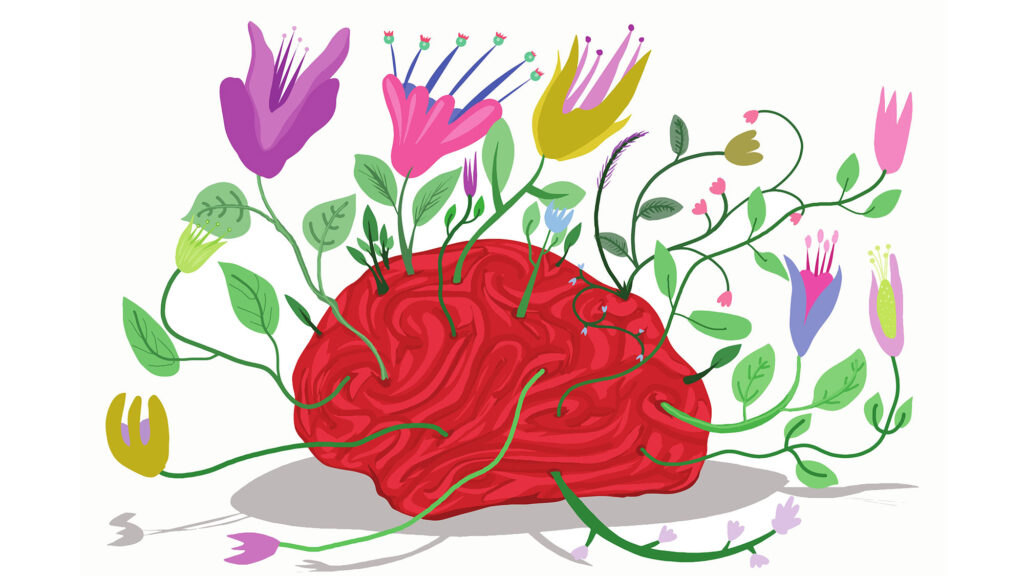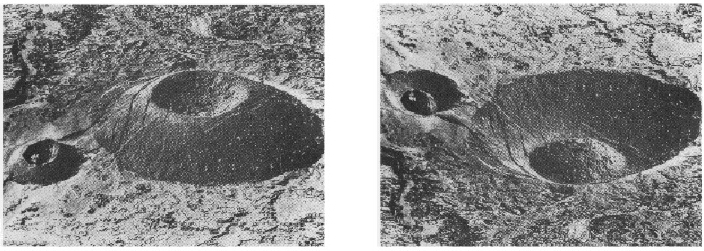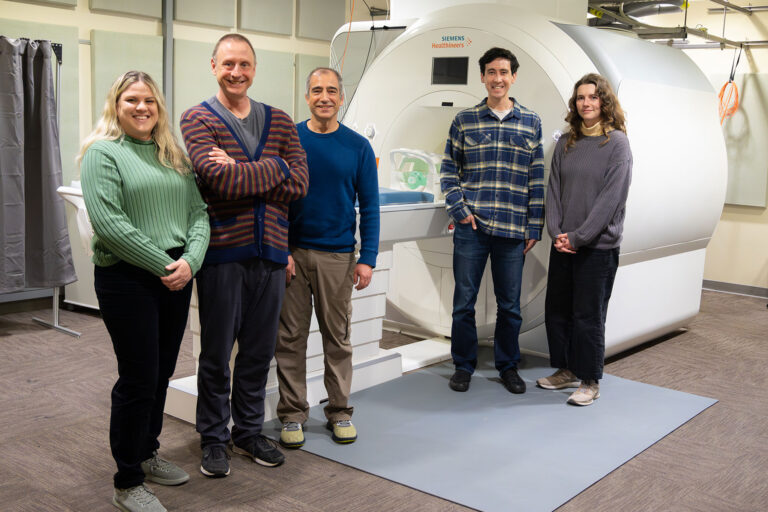Psychedelics Change How We See the World. A UC Berkeley study aims to find out why.
Researchers will use neuroimaging to observe the effects of psilocybin on the human brain — in real-time.

For many people, psychedelic-assisted therapy has the power to unlock new insights and lift the burden of mental distress. But why these compounds have such profound effects — and how exactly they interact with the complex machinery of the human brain — remains largely a mystery.
The UC Berkeley Center for the Science of Psychedelics (BCSP) is launching a new study designed to reveal the mechanisms behind how psychedelics shape human perception.
In the experiment, healthy human participants will ingest psilocybin, a compound found in psychedelic mushrooms. Each participant will then perform simple perceptual tasks while their visual cortex is monitored using functional Magnetic Resonance Imaging (fMRI).
The researchers hope that by gaining a better understanding of how psilocybin interacts with the brain’s visual system — one of the best-understood parts of the brain — they will also obtain insights into these drugs’ wide-ranging impacts on the human mind.
“We have this incredible opportunity to characterize the psychedelic experience in real time — while it’s happening — using modern neuroimaging methods,” said Michael Silver, director of the BCSP and the study’s leader. “Understanding the actions of psychedelics at a neuroscientific level will generate insights into how they’re working as medicines and will hopefully help us develop more effective treatments for mental health disorders. It will also shed light on some of the fundamental mysteries of the human brain, mind and consciousness and how they relate to each other.”
For centuries, plants and fungi with psychedelic properties have been included in the sacred ceremonial practices of many Indigenous communities. In the 1950s and 1960s, Western scientists, psychiatrists and therapists began testing whether psychoactive compounds purified from plants and fungi, as well as novel synthetic compounds, could help treat mental health disorders. However, these studies were curtailed by the passing of the Controlled Substances Act in 1970, which restricted the use of many psychedelic substances. More recently, there has been a resurgence in research involving psilocybin in human participants.
The new study at Berkeley is unique in that it is one of only a limited number of clinical trials that are examining the neurobiological actions of psilocybin, rather than focusing on its effects on clinical symptoms and behaviors. The study also marks the first time that human subjects research involving psilocybin — or any other Schedule I drug — will be conducted on the Berkeley campus. The study is currently enrolling volunteers and screening of the first participants is underway.
Source: “Local Shading Analysis,” by Alex P. Pentland
‘Unlike a video camera’
Human vision is powered just as much by our brains as it is by our eyes. Each human eye contains only about 1 million of the retinal ganglion cells which transmit information from the eye to the brain, on par with the number of sensors in a 1 megapixel camera. That means that, if our visual perception were determined only by the cells in our eyes, humans would see with approximately the same resolution as the camera on the original 2007 Apple iPhone.
Instead, our brains construct a rich, detailed view of the world by combining the limited sensory information from our eyes with assumptions based on regularly occurring patterns that we experience in the visual world. These assumptions, also called “visual priors,” fill in the gaps and help to resolve ambiguities in the sensory data.
“The way that we perceive the world is very unlike a video camera,” Silver said. “While a camera just passively records whatever comes through the lens, our brain takes that sensory information from the eyes and combines it with previous experiences to generate our conscious experience of the world. We make implicit assumptions — for example, that objects that are in one place tend to stay in one place, or that objects that are moving tend to continue moving along that trajectory — to help construct our perceptions.”

Source: “Local Shading Analysis,” by Alex P. Pentland
The effects of visual priors on perception can also create illusions or lead people to have conflicting interpretations of the same image. For example, a photo of a dress famously went viral in 2015 after triggering heated online arguments over whether the dress was blue and black or white and gold. It turns out that the colors each person saw depended on largely unconscious assumptions that they were making about the lighting in the photo.
In the new experiment supported by the BCSP, Silver and his team will examine how psilocybin shapes visual perception and how these perceptions are generated by the brain. Their aim is to test a hypothesis known as REBUS, or relaxed beliefs under psychedelics, which proposes that psychedelics work by “relaxing” implicit assumptions, so that our perceptions are shaped less by visual priors and more by raw sensory information.
The REBUS hypothesis, created by neuroscientists Robin Carhart-Harris and Karl Friston, could help explain why psychedelic-assisted therapy can help treat so many different mental health disorders, Silver said.
“If you think about the disorders where we have the best evidence that psychedelics can be a useful therapy, including PTSD, depression, anxiety and various substance use disorders, they often involve a maladaptive prior or belief, such as a negative self-image,” Silver said. “The REBUS theory proposes that psychedelic-assisted therapy works by reducing the influence of these priors, followed by construction of healthier priors through psychotherapy.”
However, the REBUS theory is difficult to test in the context of mental health, because scientists only have a limited understanding of how high-level beliefs, such as self-image, are encoded in the brain. Silver hopes that, by shifting these research questions to the visual system, his team will be able to test the theory more rigorously, while also obtaining valuable information about how psychedelics impact the visual system and visual perception.
“We know a great deal about the different structures and neural types in the visual system, and as a result, we have some understanding of what visual priors and sensory information look like in the brain, and how they interact with each other,” Silver said. “And so, using functional magnetic resonance imaging, we can test this theory in a very rigorous way.”

Brandon Sánchez Mejia/UC Berkeley
Overcoming regulatory hurdles
For years, researchers in Silver’s lab have studied how pharmaceutical prescription drugs — including the Alzheimer’s medication Aricept — impact visual perception and brain activity. Expanding this work to include psychedelic compounds could not only improve treatment options for mental illness, but also reveal more about how the brain constructs our experience of the world around us.
“Psychedelics have always seemed like an interesting, extreme case of how the brain can create really fantastical and amazing visual representations,” said Sean Noah, a postdoctoral researcher in The Silver Lab. “I think there’s a lot of unexplored potential in using psychedelics as tools to understand how the brain constructs our visual representation of the world and how the brain is related to consciousness in general.”
As a Schedule I drug, psilocybin is strictly regulated by the federal government. Silver and his team in the BCSP have worked for years to obtain the federal, state, and campus-level regulatory approvals necessary to use psilocybin, and they must follow stringent rules for handling the material — including storing it in a safe that is bolted into the floor and located behind multiple sets of locked doors.
“The preparation needed to be able to conduct psychedelics research in human subjects at Berkeley for the first time has been more than ten times as much work as preparing to do similar experiments involving pharmaceutical drugs that are not controlled substances,” Silver said. “But I think that the infrastructure that we’ve built is going to be very helpful for future human neuroscience studies of psychedelics in the BCSP.”
To participate or learn more, please contact BCSP Research Staff at BCSPResearch@gmail.com
